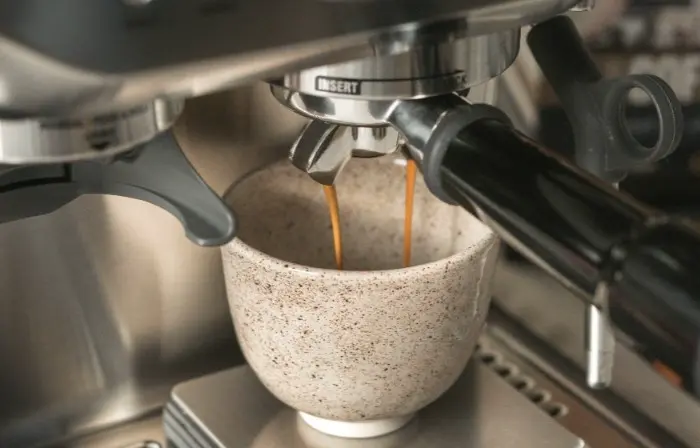Nitro cold brew has become a popular choice among coffee enthusiasts for its smooth texture and creamy mouthfeel. Unlike traditional iced coffee, nitro cold brew is infused with nitrogen gas, giving it a velvety consistency similar to a stout beer. One of the most common questions about nitro cold brew is why it is served without ice. The answer lies in the science of nitrogen infusion, the brewing process, and the desired drinking experience.
Nitrogen gas dissolves more easily in cold liquids, which is why nitro cold brew is always served chilled. Adding ice would dilute the coffee as it melts, disrupting the carefully balanced flavor and texture. The nitrogen bubbles create a foamy layer on top, enhancing the sensory experience. If ice were added, the rapid temperature change and dilution would cause the nitrogen to escape faster, resulting in a flatter, less enjoyable drink.
The Role of Temperature and Dilution
Cold brew coffee is brewed with cold or room-temperature water over an extended period, usually 12 to 24 hours. This slow extraction process produces a coffee concentrate that is less acidic and smoother than hot-brewed coffee. When served as nitro cold brew, the coffee is further chilled and pressurized with nitrogen before being dispensed through a tap.
Ice introduces two major problems: dilution and temperature fluctuation. As ice melts, it turns into water, weakening the coffee’s rich flavor. Since nitro cold brew is already served at an optimal temperature, adding ice is unnecessary and counterproductive. The goal is to maintain the coffee’s full-bodied taste and creamy texture, which can only be achieved by keeping it undiluted.
Medical Perspective on Cold Beverages and Digestion
From a medical standpoint, extremely cold beverages can affect digestion. The human stomach functions best at body temperature, and consuming very cold drinks may temporarily slow down digestion. However, nitro cold brew is served cold but not ice-cold, making it easier on the stomach compared to traditional iced coffee filled with melting ice cubes.
Additionally, cold brew coffee naturally has lower acidity than hot-brewed coffee, reducing the risk of acid reflux and stomach irritation. The absence of ice ensures that the coffee maintains its smooth, low-acid profile throughout consumption. For people with sensitive stomachs, nitro cold brew offers a gentler alternative to regular iced coffee.
The Impact on Flavor and Aroma
Coffee’s flavor and aroma are highly sensitive to temperature and composition. Nitrogen infusion enhances the natural sweetness of cold brew while suppressing bitterness. The tiny nitrogen bubbles create a creamy texture that mimics the mouthfeel of dairy, making it appealing even to those who usually prefer milk in their coffee.
Adding ice disrupts this delicate balance. As the ice melts, it not only dilutes the coffee but also alters its chemical composition. The rapid temperature drop can mute the subtle flavor notes that nitro cold brew is known for. Baristas and coffee experts recommend drinking nitro cold brew as it is served—without ice—to fully appreciate its unique characteristics.
The Practical Reasons Behind No-Ice Serving
Beyond flavor and science, there are practical reasons why nitro cold brew is served without ice. The dispensing system for nitro cold brew is designed to deliver the coffee at the perfect consistency. The pressurized kegs and specialized taps ensure that the nitrogen remains dissolved until the moment it is poured. Adding ice to the glass before pouring would interfere with this process, leading to inconsistent texture and carbonation.
Moreover, nitro cold brew is often served in clear glasses to showcase its cascading effect—the mesmerizing swirl of bubbles that settle into a creamy head. Ice cubes would obstruct this visual appeal, taking away from the aesthetic experience that makes nitro cold brew special.
Consumer Preferences and Industry Standards
Coffee shops and specialty cafes have standardized the no-ice rule for nitro cold brew to maintain quality control. Most establishments take pride in serving nitro cold brew at its best, and adding ice would compromise their product. Regular customers of nitro cold brew have come to expect its rich, undiluted taste, and introducing ice would likely lead to dissatisfaction.
Some people may initially find it unusual to drink cold coffee without ice, but once they experience the full flavor and texture of nitro cold brew, they often prefer it this way. The absence of ice allows the drinker to savor every nuance of the coffee, from its bold initial taste to its smooth, lingering finish.
Conclusion
Nitro cold brew is a unique coffee experience that relies on precise preparation and serving techniques. The decision to serve it without ice is not arbitrary—it is backed by science, flavor preservation, and practical considerations. Adding ice would dilute the coffee, disrupt the nitrogen infusion, and detract from the intended sensory experience. For those who appreciate the craftsmanship behind nitro cold brew, drinking it as served—smooth, creamy, and ice-free—is the best way to enjoy this modern coffee innovation.
Whether you’re a casual coffee drinker or a dedicated connoisseur, understanding the reasons behind the no-ice rule can deepen your appreciation for nitro cold brew. Next time you order one, take a moment to enjoy its undiluted richness and the careful science that makes it so special.
Related topics:
How Long Does Starbucks Brew Cold Brew?


